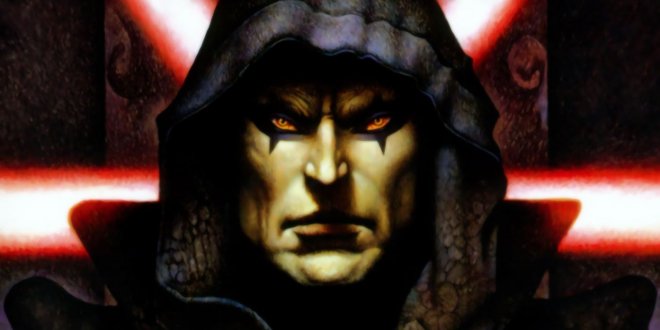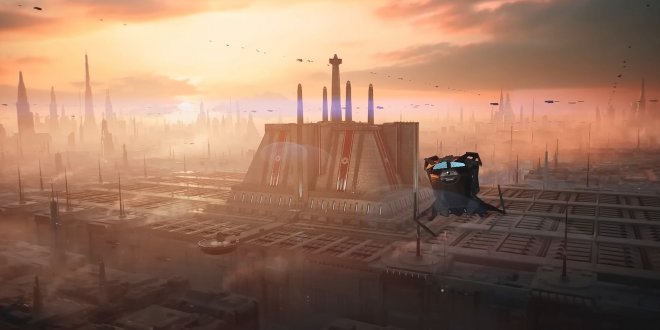
The recent Star Wars timeline finally allows viewers to figure out the nature of the SIth's 1,000-year plan to defeat the Jedi. The Star Wars galaxy is characterized by an apparently unending war between the light and dark. There were dark side cults before the Sith, with the Jedi battling a group called the Ordu Aspectu some 20,000 years before the prequel trilogy. But the Sith, originally a sect of rogue Jedi who committed themselves to the dark side, are undoubtedly the most fearsome and dangerous avatars of the dark side.
By the time of the prequel trilogy, the Jedi believed the Sith to have been extinct for a thousand years. In reality, they had been operating in the shadows, subverting the Republic and undermining the Jedi, preparing for the day when they would emerge to take their revenge. Viewers are only really familiar with the end of this story, but it's gradually becoming possible to put the pieces together and understand the full scale of the Sith's 1,000-year plan – and the mistakes the Jedi made that allowed Darth Sidious to reform the galaxy in his own twisted image for a time.
9 The Defeat Of Darth Bane & The Rule Of Two  The plan begins roughly 1,000 years before the prequel trilogy, with the defeat of Darth Bane. Although this story was told in the old Star Wars Expanded Universe, notably in a tremendous trilogy by Drew Karpyshyn, this has been rendered non-canon. Star Wars #20, by Charles Soule and Marco Castiello, suggests the circumstances were very different; there, a Jedi Master schooled in galactic history refers to the Jedi ending "the rule of Sith Lord Darth Bane." This suggests that, in canon, Darth Bane ruled the Sith Empire and decreed the Rule of Two from a position of power and authority.
The plan begins roughly 1,000 years before the prequel trilogy, with the defeat of Darth Bane. Although this story was told in the old Star Wars Expanded Universe, notably in a tremendous trilogy by Drew Karpyshyn, this has been rendered non-canon. Star Wars #20, by Charles Soule and Marco Castiello, suggests the circumstances were very different; there, a Jedi Master schooled in galactic history refers to the Jedi ending "the rule of Sith Lord Darth Bane." This suggests that, in canon, Darth Bane ruled the Sith Empire and decreed the Rule of Two from a position of power and authority.
Star Wars: Timelines, by Kristin Baver, Jason Fry, Cole Horton, Amy Richau, and Clayton Sandell, reveals the Jedi established the Temple on Coruscant in the same year Darth Bane decreed the Rule of Two. It is highly likely these two events were connected; Coruscant had been of galactic significance for millennia already, so it likely served as the capital of Darth Bane's empire. Presumably Sith in-fighting led Darth Bane to recognize the need for the Rule of Two, but too late to prevent Coruscant being liberated. The Jedi believed they had triumphed.
8 The Jedi Temple On Coruscant Was A Mistake  The Jedi Temple on Coruscant was built on an ancient dark side shrine, one that appears to have actually predated the Sith. This was a deliberate act on the part of the Jedi, who believed their light could gradually neutralize the darkness of the shrine. James Luceno's novel Tarkin suggests this was a mistake, however; it features a scene in which Palpatine visits the shrine, and reflects on how its darkness permeated the Jedi Temple, gradually restricting the Jedi's ability to perceive the Force. To be fair to the Jedi, this was initially only one of countless temples scattered across the galaxy; recent novels in the Star Wars: The High Republic range have revealed the Jedi based themselves instead on Jedha, the sacred kyber-rich moon seen in Rogue One: A Star Wars Story.
The Jedi Temple on Coruscant was built on an ancient dark side shrine, one that appears to have actually predated the Sith. This was a deliberate act on the part of the Jedi, who believed their light could gradually neutralize the darkness of the shrine. James Luceno's novel Tarkin suggests this was a mistake, however; it features a scene in which Palpatine visits the shrine, and reflects on how its darkness permeated the Jedi Temple, gradually restricting the Jedi's ability to perceive the Force. To be fair to the Jedi, this was initially only one of countless temples scattered across the galaxy; recent novels in the Star Wars: The High Republic range have revealed the Jedi based themselves instead on Jedha, the sacred kyber-rich moon seen in Rogue One: A Star Wars Story.
7 The Sith's First Priority Was To Make Coruscant All-Important To The Republic  This created a perfect opportunity for the Sith; if they could encourage the Jedi to concentrate themselves on Coruscant, then their enemies would logically be weakened. The first priority, then, would be to ensure Coruscant became a dominant world in the Republic. This wouldn't have been difficult to do; Coruscant had been one of the founders of the Republic long before the schism among the Jedi that created the Sith (along with Corellia and Alderaan). Working from the shadows, the Sith would have been able to bolster Coruscant's importance by subtly undermining potential rivals. Alexander Freed's novel Shadow Fall strongly hints the Sith undermined a rival for Coruscant called Troithe, an important world in the Mid Rim that suffered a short-lived civil war "manipulated in part by an ambitious aristo-mercantile family seeking to profit."
This created a perfect opportunity for the Sith; if they could encourage the Jedi to concentrate themselves on Coruscant, then their enemies would logically be weakened. The first priority, then, would be to ensure Coruscant became a dominant world in the Republic. This wouldn't have been difficult to do; Coruscant had been one of the founders of the Republic long before the schism among the Jedi that created the Sith (along with Corellia and Alderaan). Working from the shadows, the Sith would have been able to bolster Coruscant's importance by subtly undermining potential rivals. Alexander Freed's novel Shadow Fall strongly hints the Sith undermined a rival for Coruscant called Troithe, an important world in the Mid Rim that suffered a short-lived civil war "manipulated in part by an ambitious aristo-mercantile family seeking to profit."
6 The Sith Needed To Encourage The Jedi To Leave Jedha  The Sith's next task would be ensuring the Jedi left Jedha, relocating to Coruscant as their base of operations. This may have been accomplished by encouraging other Force groups to object to the Jedi rule of Jedha, given the moon was sacred to many other cults and sects as well. Little is known of this particular stage of the strategy; it certainly seems to have happened well before Star Wars: The High Republic Phase II, which is set 350 years before the prequels. Still, given how convenient this was, it is unlikely to have been a coincidence.
The Sith's next task would be ensuring the Jedi left Jedha, relocating to Coruscant as their base of operations. This may have been accomplished by encouraging other Force groups to object to the Jedi rule of Jedha, given the moon was sacred to many other cults and sects as well. Little is known of this particular stage of the strategy; it certainly seems to have happened well before Star Wars: The High Republic Phase II, which is set 350 years before the prequels. Still, given how convenient this was, it is unlikely to have been a coincidence.
5 The Jedi Retreated To Coruscant During The High Republic Era  The High Republic Era was essentially the golden age of the Jedi Order, and it is surely significant this was a time when the Jedi scattered across the galaxy. Although Coruscant was important, there were countless temples situated on different worlds, including smaller ones on the Outer Rim. Jedi Masters such as Yoda often spent a great deal of time away from the Temple, reducing the impact of Coruscant's dark side vergence. But everything changed after the fall of Starlight Beacon, a Jedi outpost on a massive Outer Rim space station. This event is told in Claudia Gray's novel The Fallen Star, which sees the Jedi shaken when they realize a group of space pirates known as the Nihil have acquired Force predators known as the Nameless that can feast upon them.
The High Republic Era was essentially the golden age of the Jedi Order, and it is surely significant this was a time when the Jedi scattered across the galaxy. Although Coruscant was important, there were countless temples situated on different worlds, including smaller ones on the Outer Rim. Jedi Masters such as Yoda often spent a great deal of time away from the Temple, reducing the impact of Coruscant's dark side vergence. But everything changed after the fall of Starlight Beacon, a Jedi outpost on a massive Outer Rim space station. This event is told in Claudia Gray's novel The Fallen Star, which sees the Jedi shaken when they realize a group of space pirates known as the Nihil have acquired Force predators known as the Nameless that can feast upon them.






